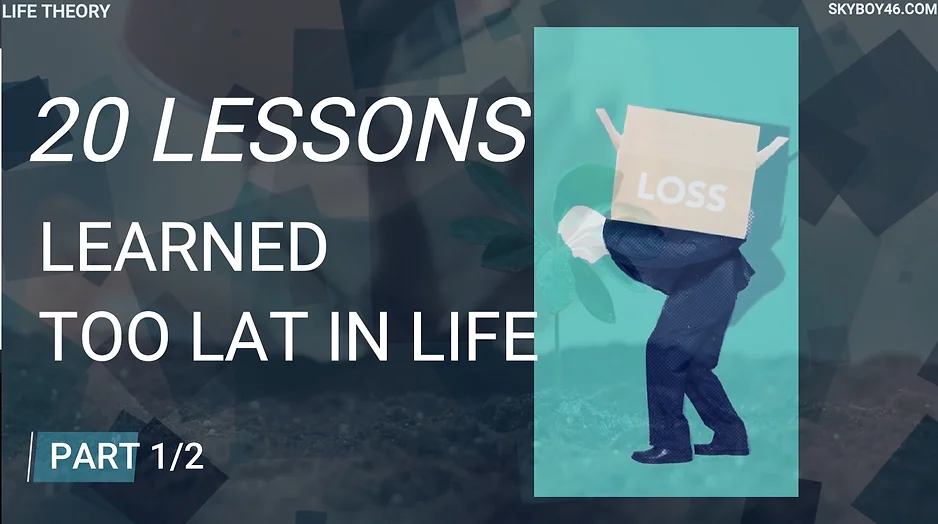Don’t Want To Read?
Watch/Listen To The Full Video on YouTube
Life isn’t a marathon—it’s a series of sprints. The key to progress isn’t grinding at a slow, steady pace but embracing intense bursts of focused effort, followed by intentional rest and reassessment. Like a lion hunting, we thrive when we sprint full force, pause to recharge, and refine our approach. This cycle applies to everything—careers, personal growth, and relationships. Ignoring the need for rest leads to burnout, while strategic pauses fuel long-term success. Trust your instincts, listen to your body, and master the rhythm of sprinting, resting, and rising stronger each time.
SUBSCRIBE: https://www.youtube.com/@LifeTheory46
Sprint, Rest, Assess, Sprint – Life Stories 226
We often like to imagine our days and our lives as one straight line, a steady upward progression. In this vision, we start at the bottom, and as we gain more knowledge and experience, we steadily climb up that line until we reach the peak, right? But you and I both know that’s not how life works at all. Instead of a straight line, it’s more like a crazy zigzag. One day you’re soaring high, and the next, you might be tumbling down. Sometimes, you plateau for a while before the next surge forward. That’s life—unpredictable, messy, and full of ups and downs.
We all hit obstacles, and when we do, it’s disorienting. You might even feel like you’ve fallen below where you started. It can leave you questioning everything, stuck in a loop of “How did I end up here?” But here’s the thing—it’s only after years of experience, mistakes, and a lot of reflection that we begin to understand this truth: life isn’t about a constant upward climb. It’s about ebbs and flows, sprints and pauses. It’s about learning that there’s power in sprinting hard and then stepping back to rest and reassess.
Think about how most people go about their day. We drag ourselves out of bed, wait for the coffee to kick in, then slog through the day at a slow, deliberate pace. And while that might work for some, it’s not the most efficient way to use your energy or your potential. It’s exhausting, and it doesn’t give you room to make mistakes or adjust. Eventually, you have to change that marathon mindset. You’ve got to make space for sprinting.
Here’s where we take a page from nature. Naval Ravikant says we should “live like a lion.” Actually, maybe we should say, “live like a lioness.” When lions hunt, they sprint, rest, and reassess. They don’t just plod along slowly, hoping to catch something. They go all in, then take the time to regroup. And that’s exactly what we should be doing as well: sprint, rest, assess, and then sprint again.
When you sprint, you tap into a state of flow. You’re not overthinking, you’re not second-guessing yourself. You’re relying on your instincts, the wisdom you’ve built over the years. You trust yourself to move forward without constantly questioning your next step. Imagine how many opportunities you’d seize if you didn’t have time to doubt yourself. And if you stumble, you don’t have time to dwell on it. You get up and keep running. You’re too focused on the task to worry about what others think. That’s the beauty of the sprint—it’s intense, but it’s short-lived.
The best part? Sprinting isn’t meant to be sustainable. You’re not supposed to keep that pace forever. After the sprint comes the rest and assess phase. This is where you take a step back, reflect on what you’ve achieved, and figure out your next move. You recharge mentally and physically. You tweak your approach based on what you’ve learned during the sprint. This cycle of action and reflection helps you grow in ways a slow, steady grind never could.
Let’s say you’ve committed to taking a course this year, on top of your full-time job and family responsibilities. It’s a lot, right? Most people would put it off, waiting for a less busy time in life (which never really comes), or they’d scale back, afraid they couldn’t handle the workload. But with the sprint-rest-reassess mindset, you go all in at first. Maybe you can manage two or three classes a week. Maybe not. But you won’t know until you try. If it’s too much, you reassess during your rest phase, make adjustments, and then go at it again.
This approach doesn’t just apply to big goals—it works for everything: your career, your personal projects, even your family life. You sprint hard when it’s time to get things done, then you rest, recharge, and figure out the next step. It’s a rhythm that allows you to be your most productive without burning out.
Here’s another piece of wisdom from Naval: the traditional 40-hour workweek is, frankly, outdated. Our productivity doesn’t turn on at 9 a.m. and shut off at 5 p.m. Some days, you’ll have bursts of energy and inspiration late at night. Other days, you might hit the ground running on Monday, only to feel wiped out by Wednesday. Knowledge workers, like athletes, need to train in bursts—sprint, then rest.
So, what’s the takeaway? Embrace the sprint-rest-assess cycle in all areas of your life. Whether it’s work, personal goals, or relationships, go all in when it’s time to sprint. Then take a break, evaluate where you are, and adjust your course before the next sprint. Trust your body and mind to guide you. And most importantly, listen when they tell you it’s time to rest.
The biggest mistake we make is ignoring that inner voice that says, “It’s time to slow down.” But if you want to win, you’ve got to treat your mind and body like teammates—they know what they’re doing.
So, are you ready to sprint, rest, and reassess? Let’s go! On your mark, get set, sprint!
–> Read More Life Stories Here:
https://www.lifetheory.us
https://www.lifetheory.eu
Buy all of our Life Stories & Our Premium Learning Packs. Listen or Read to them anytime you want. Have them Forever.
You can get each monthly lesson on our website at https://www.skyboy46.com/store
SHARE THIS STORY
Visit Our Store
SHOP NOW
www.skyboy46.com & www.myskypet.com
Designed For Pet Lovers & Introverted Souls
Sport, Hobbies, Motivation, Music & Art






~EXPLORE MORE~
www.linktr.ee/skyboy46


